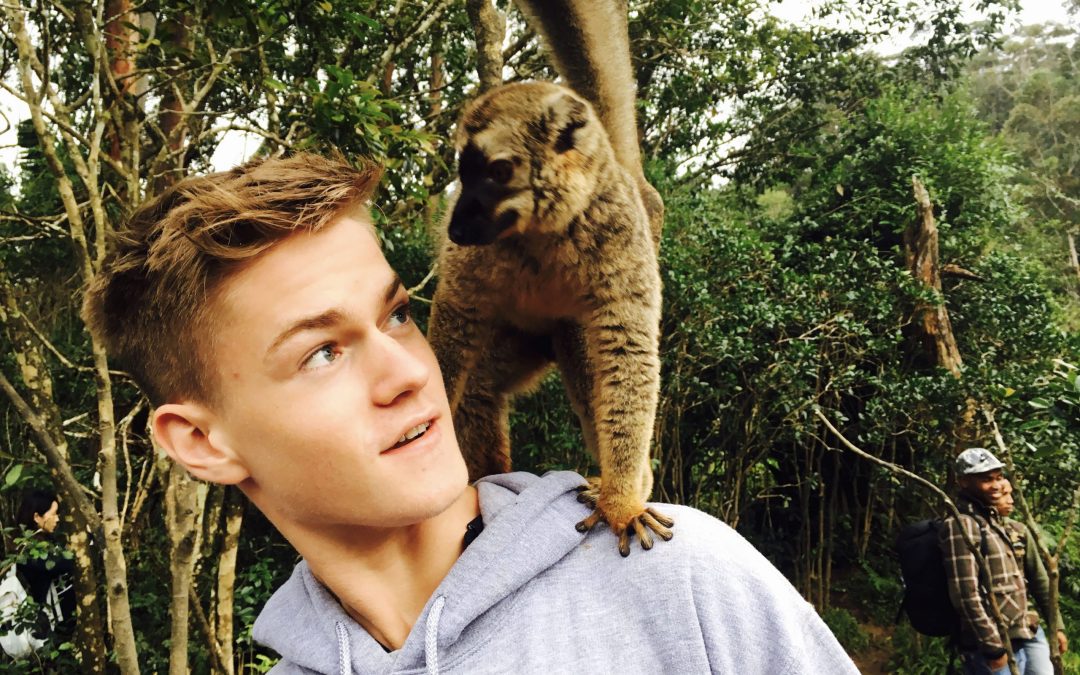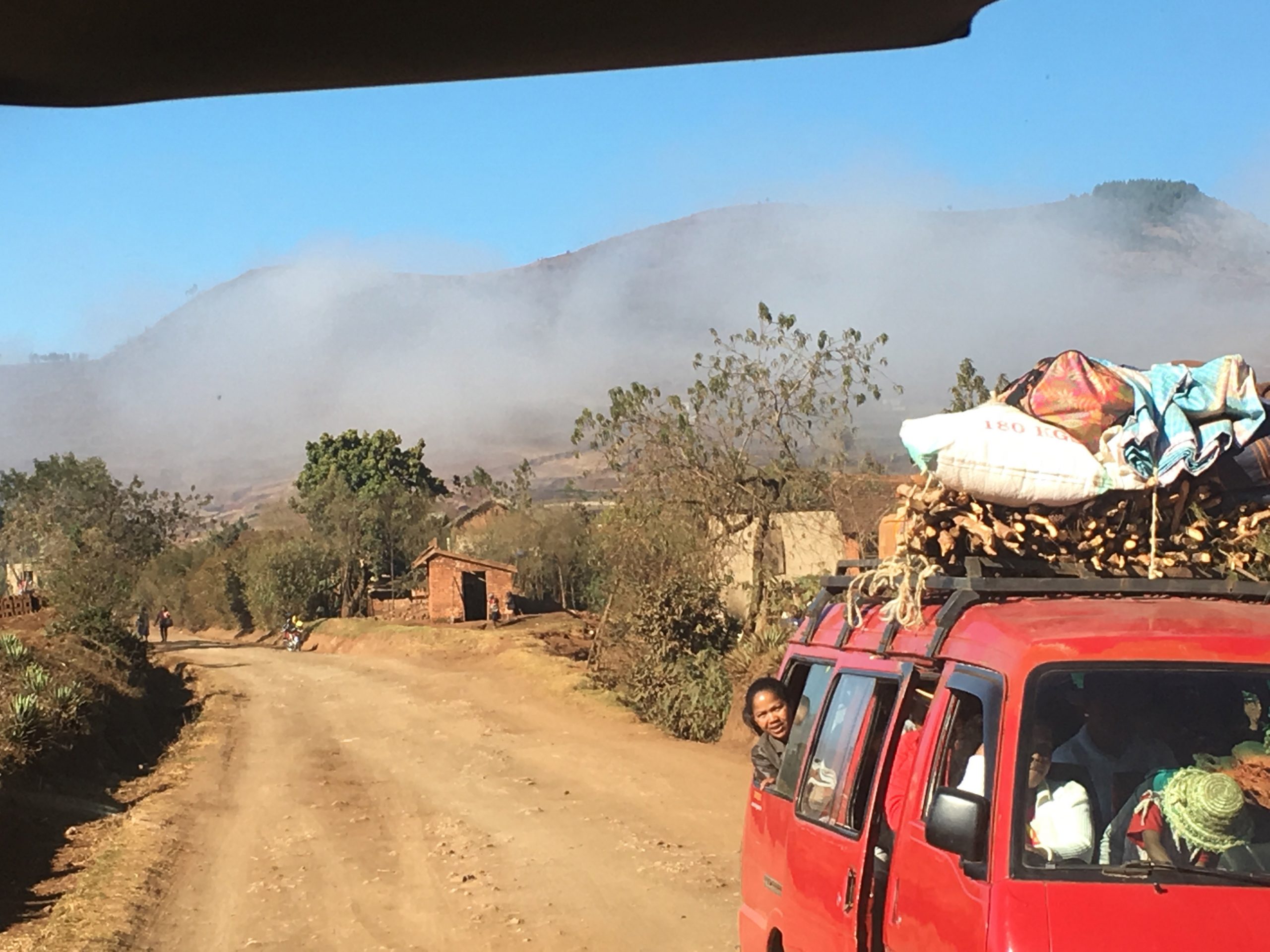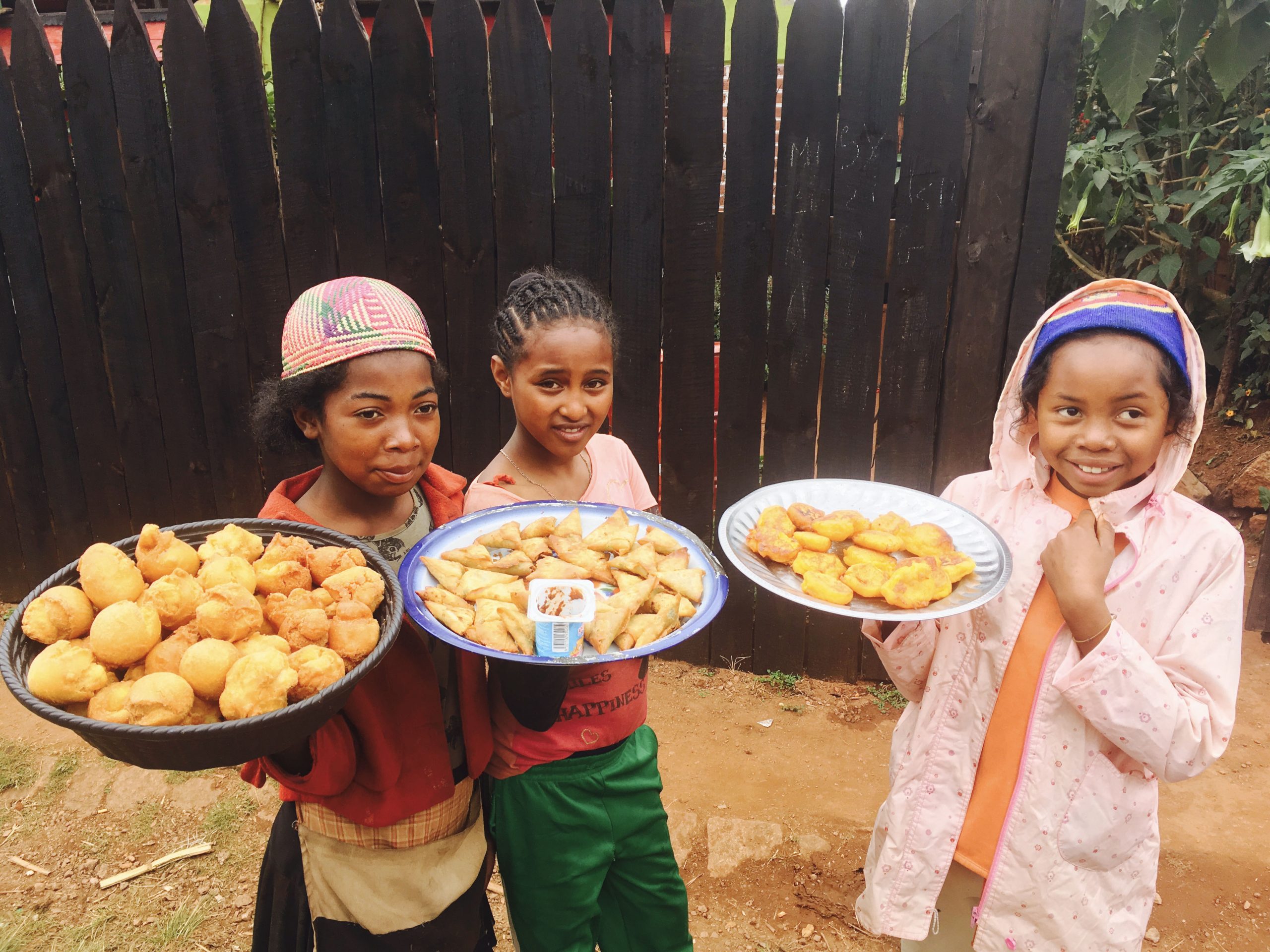The real Madagascar
Sarah Tucker spends 15 days in this contradictory and confrontational island off the coast of Africa

8 minute read
David Attenborough wept when he visited a year ago. He stood gazing out over the rainforest, now scorched and burnt to build the rice terraces. The scene would have been charming if he didn’t know what had been there before. A mirror image of Tolkien’s Middle Earth, the trees cut down, the red soil rich with minerals bleeding to build the bricks for houses fit for the Malagasy, and rice terraces to supply more rice than even the Chinese would know what to do with.
There are hundreds of Malagasy men and women working – digging deep to create bricks from mud, placed in prosaic piles and then fired in kilns made of the same brick. A fifteen-day tour of the island is not enough to do justice to the place, but on the whistle stop tour organised by tour company Explore, it is enough to realise Madagascar is going through an industrial revolution and why Attenborough sobbed the way he did. But we went through our own revolution, so who are we to judge?

I went with Explore, a company which has excellent guides, and Claude was our guide for the fortnight. He kept saying to me, ‘please tell the truth won’t you, about this place.’ I promised him I would.
This is Madagascar in the raw and myself, and ten others (including my eighteen year old son Tom on our last big holiday adventure together) travelled in a coach 1000 miles in fifteen days from the cold wet highlands of the East to the hot, arid desert and beach coast of the west.
First, the dark side
The culture here is complex, contradictory and confrontational. The rainforests have been decimated on a scale I could not have imagined (nor Attenborough) all within a decade. There are pockets left and what is left is being eaten away by locals who do not understand the value of lemurs, chameleons, geckos and the tourists who pay money to visit them. Why should they? If they are able to feed their family on rice and get money for the sapphires they mine for, what good is a lemur? The wide-eyed all-dancing, all-singing animal is something that they have grown up with but either have to be paid to not kill or penalised with twenty five years imprisonment if they do.
There are initiatives to integrate the community (a company called Val Bio in particular is working hard to get the locals to protect what is left of their rainforest) into understanding the importance of the rainforest but the lack of understanding shows in the poor quality of guiding. At only one Park we visited, the Lemur Park outside the town of Tanna, which has traffic resembling Fulham Road on a Chelsea Cup Final, we were told to not approach the lemurs, they can approach us, but we don’t approach them. No smoking, no loud voices and no feeding. All other Parks we visited – and we visited over fifteen in our time there – there was no direction, the guides were noisy and ‘lion fever’ ensued when lemurs were spotted, as all the groups trekking through the forests rushed to the sites, pushing each other over, while the hapless lemurs looked down from on high wondering what all the fuss was about. The lemurs that ventured down – some more confident than others – looked curious but most looked scared. They have reason to be.
On the edge of Sapphire City, a village which has built up over a year following the find of sapphires, a small amount of rainforest (Zombitse National Park – now protected by the World Wildlife Fund – is the last place of the nocturnal (vampiric) lemur, and the Madagascar buzzard, cuckoo roller and black parrots and Greenbull.
It is a rainforest zoo with tours which last about an hour and a half, but we are told the locals from Sapphire Town come in at night and kill the lemurs because they believe if there are no lemurs to save there is no need for a rainforest, and they will be able to mine this area too. One of the other guests in the group tells me in South Africa they have solved this problem. They kill poachers on sight. No jail, no excuse, no burial.
And what of the Malagasy themselves? Heaped in ancestral ‘it’s always done this way’ with a healthy dose of fear and cruelty. Take the fate of the majestic Zebu, native to the island. Any man worth his many Zebu herd, receives a tomb at his death accustomed to his wealth his life. In the Barra tribe, a man steals a Zebu, a majestic animal with a beautiful face, and then buys a wife with it. The prettier the wife, the more Zebu he must steal. The tribe is polygamous, as are most of the tribes in the west, and so he ends up stealing a lot of Zebu. When they marry they kill the Zebu. A man is only worth as many Zebu he has. He steals them and then creates a herd – which again all are slaughtered at his death. The Malagasy believe when a man dies his children should not inherit, as they need to prove their own worth. Vast herds are killed and the meat is wasted as even in the grandest of ceremonies not all is eaten. There is no way to store the meat either.
Next, Zebu are slaughtered as part of a ritual ceremony to awaken the spirits. The Zebu is pierced through the throat with a spear, so the animal screams and awakens the spirits. The throat is then cut and the blood encouraged to flow onto the ground. It is not good to be a Zebu in Madagascar. The chickens are something else here. There was a tradition to have all newborns left in a Zebu enclosure and if the Zebu stepped on the baby, the baby was a bad spirit and was meant to die, and if the baby survived it was a good spirit. They don’t do that one any more. The normal size of family used to be eleven (despite the Zebu ceremony) and is now four. The population has increased from five million in 2010 to twenty five million in 2016, most being young.
The animals do not stand a chance
Is there any light relief? A light side? So-called ‘sporting chickens’ because they have long legs and long necks and are able to run very fast, they are, like the Zebu, a mainstay of the cooking, which is mainly rice, rice and more rice, sweet potato in the west and vegetables. The influence of France dominates, as do the number of visitors from France. Breakfast is bread and jam, sometimes with croissant and pain au chocolat although that is mainly for the tourist as it is in France.

And what of the lemur? You need a good camera. An iPhone is not good enough. You need a zoom. The lemurs rightly stay up in the trees away from the visitors, bewildered by the noise down below. In Ranomafana National park, where the new species of lemur – the Gold Bamboo – can be found, when we found it, so did four other groups, all pushing each other out the way, guides shouting to each other, trekkers chatting away. No one was told to shut up. In the fifteen days I was there, I saw over eighteen species although there are suspected to be over eighty and many more yet to be discovered before they cut down all the rainforest.
You will get neck ache looking up for so long. I was taking photos of what I thought was a diademed sifaka lemur at the Analamazoatra Reserve, only to discover five minutes later I was staring at a clump of wet moss. It was here we also spotted chameleons, including the smallest and largest in the world, and geckos and insects, which look like dried leaves and twigs. You end up looking at everything much more closely and for longer. The lemurs are utterly enchanting. They like to ‘move it move it’, dancing between one tree to the next and singing to each other, and huddling together for warmth and comfort. Unlike the Malagasy, they are monogamous.
Some traditions are bizarre. The bones are kept of the deceased family members in carefully constructed tombs, some of which are painted. The more important the man, the bigger the tomb. We saw some the size and shape and image of small boats. Others are for families and the skeletons are piled one on top of each other, the average number each tomb takes is thirty. The skeletons of brother-in-laws are brought into the house and the men of the family are able to insult or swear at the bones as they were not able to do so in life. When I asked if the women are able to do this, Claude smiled and shook his head. ‘The women don’t need to. They do it while the man is alive.’
And what of the people?
They are lovely. Having read the above you may think they should be a cruel, hard people, but with the exception of Sapphire Town, where we weren’t allowed to stop because it was too dangerous (full of prostitutes and drug dealers, and mirror-sun glassed fat mafia types guarding gem palaces, and stores selling everything from spare ribs to spare parts, women panning for the small sapphires amongst the other stones by the side of the road). Elsewhere, the people are welcoming, friendly, engaging and curious. We stopped off at Fianarantsoa, a village on market day where the locals on the cooler days wear coloured scarves around their bodies – both men and women. Women and men carry baskets of wild spinach and sporting chickens (if they are able to catch them). Large baguettes and small sweet donuts are sold with piles of rice, and chocolate which sort of resembles our own. (Kitkat is called Kingfat there).
The east side is cool and wet, with more rainforest, and the highlands, the locals looking more Indonesian than African. Their straight hair and lighter skin only being betrayed when they are asked to dance and sing, which is infectious African beat.

The west side is hot and dry, they call the sun the eye of the day and the blanket of the poor people, and the lemurs seem to love bathing in the warmth, while they spend most of their time shivering in the rainy season. In the parched desert landscape, this is where the balboa trees survive, like giant carrots, sticking their fat fingers up into the air and surviving centuries – although they may find the next decade the toughest. Claude tells us the Chinese give the Malagasy jobs in the east, but other guides blame the Chinese for stripping the land. In the west, the Indi Pakistan treat the locals ‘like dogs’ according to Claude, but everyone blames the government. No money the government has received over the past three years has gone to any good cause.
Claude explains. ‘Since the political uprising, they just want to get as much out of the country as they can while they are in power. They don’t think about the good of the people or the long-term, they just think about how to line their own pockets. But then are your governments any better?’
Our last few days were spent on a beach. I kept calling it an island, but it wasn’t. It was just further down the coast from Toliara. We stayed in a hut on the beach, which had no running hot and cold water, and where you had to shower from large buckets and hot water was provided in a bucket on request. I became extremely adept at washing myself, remembering how I had watched the ladies by the roadside bathe their children. There was an option to go snorkelling on Nosy Ve, a sacred island where albino birds were spotted where we found Dory and Nemo and Octopus in the Indian Ocean. As well as whales. There were lots of whales.
Souvenirs are beautifully carved inlaid wood. Don’t buy sapphires or any precious stones for that matter. Say you want to see the lemurs. I believe nature always finds a way and there is hope for them thanks to the work of Theo, Patricia, Claude and people like them either doing something or sharing what they know, although by the end of the trip, I completely understood why Attenborough sobbed.
The 15-day Lost Continent (Madagascar) trip costs from £2,970pp in 2019. The price includes return flights, internal transfers, 14-nights’ accommodation, breakfast plus some lunches and dinners, and an Explore leader. Departure dates are available throughout the year.
The A to Zen of Travel (New Generation Publishing) by Sarah Tucker is out now.





